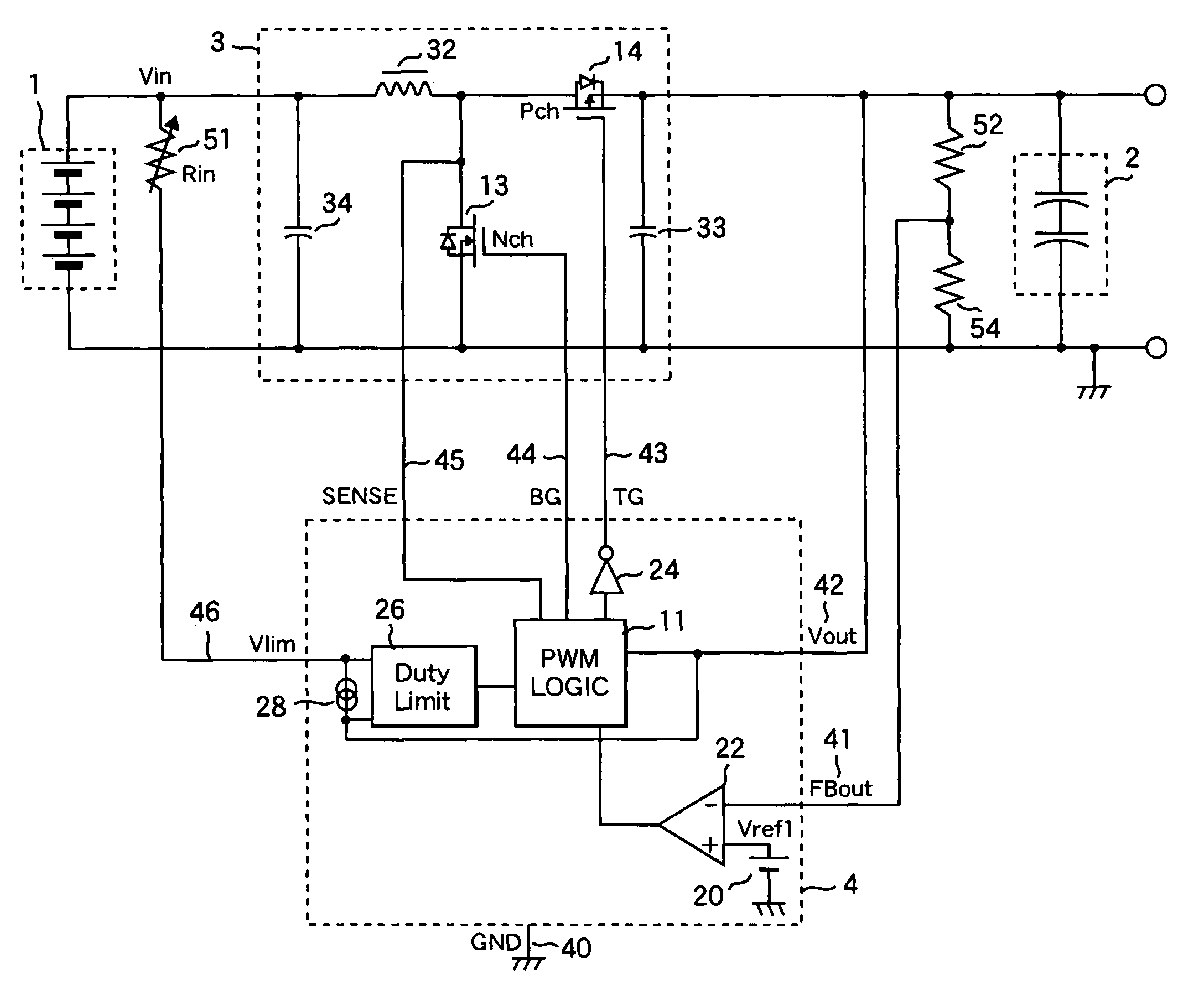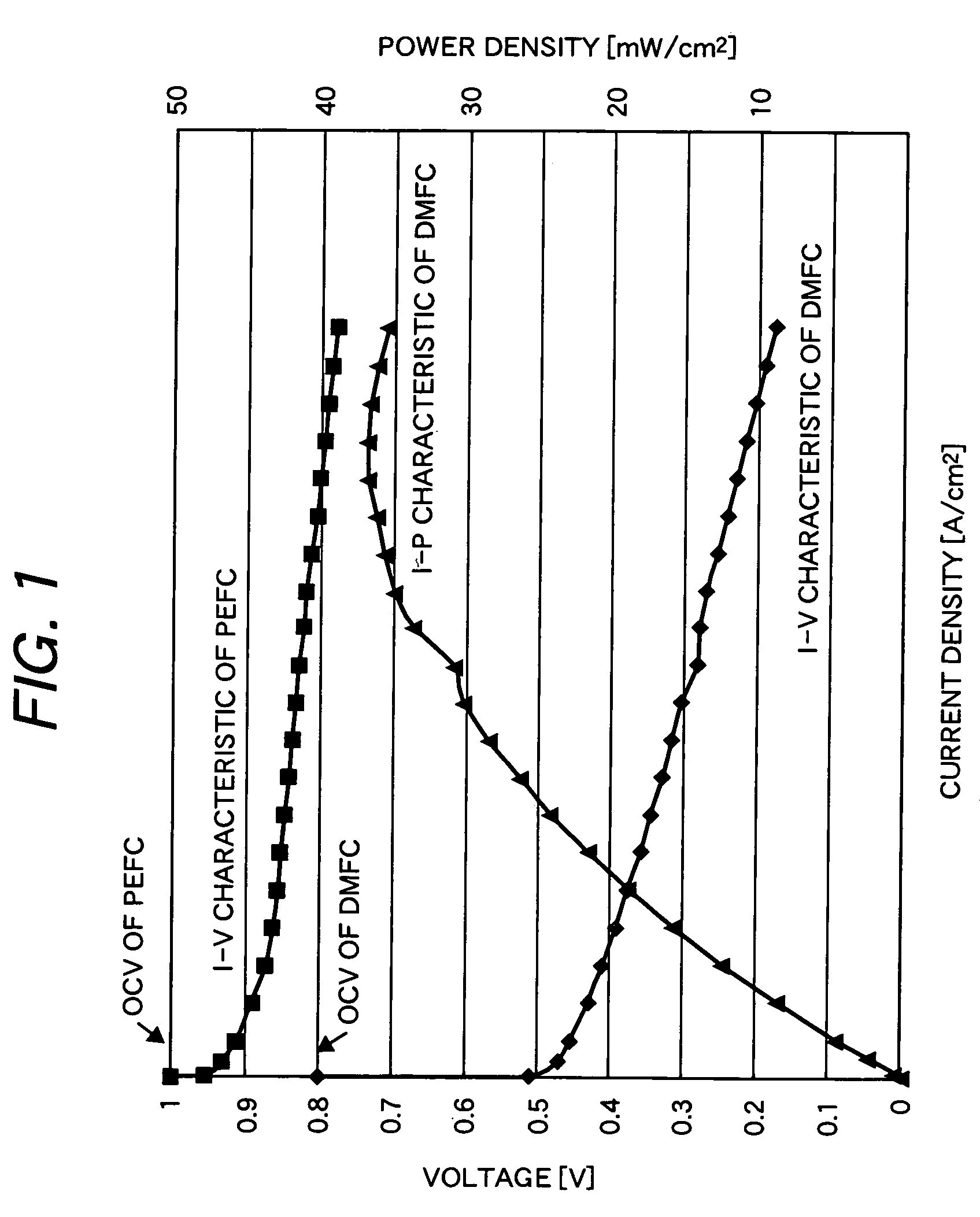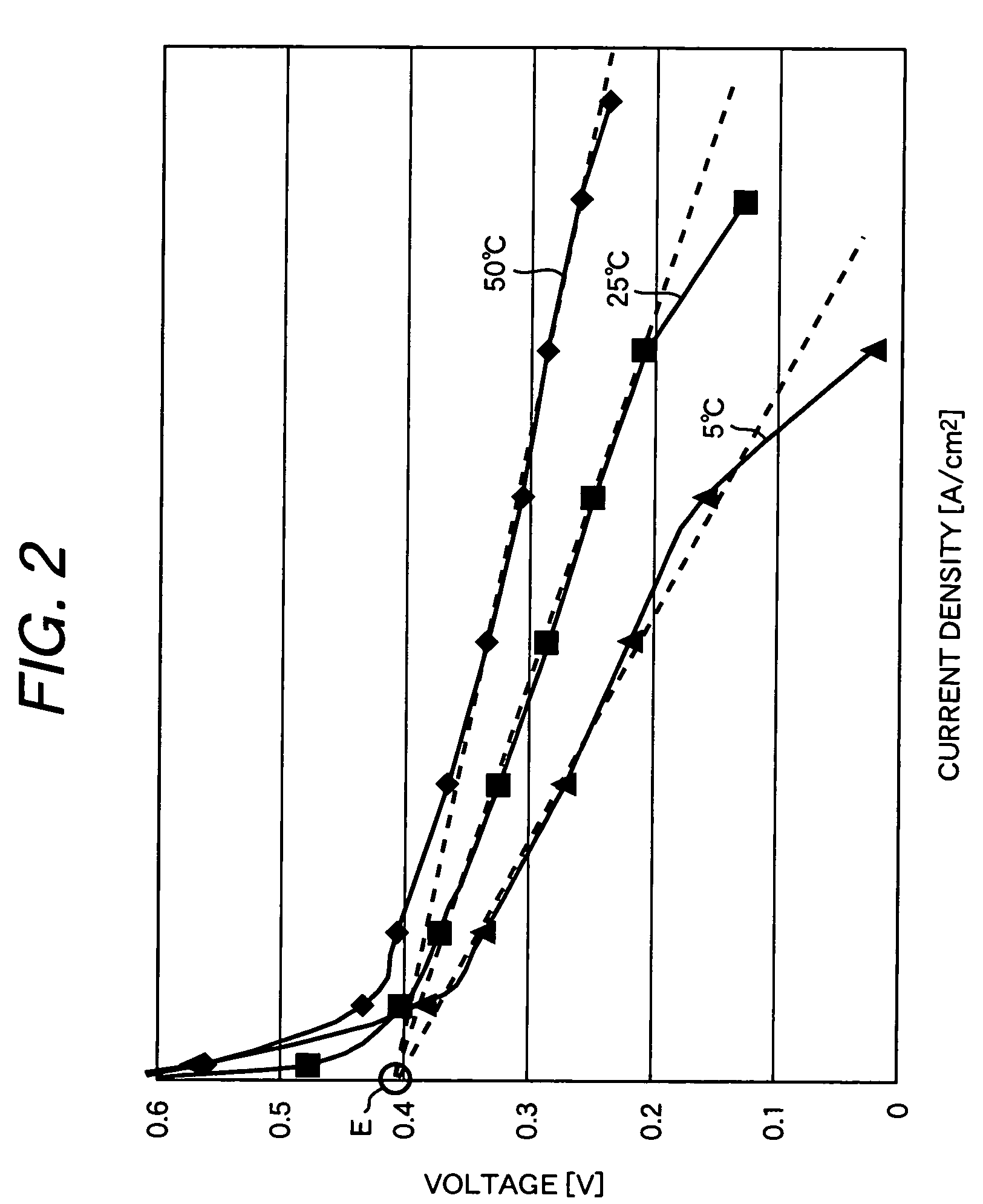Power supply apparatus with fuel cell and method of controlling the same
a technology of power supply apparatus and fuel cell, which is applied in the direction of fuel cell water management, dc network circuit arrangement, electrochemical generators, etc., can solve the problems of difficult to directly apply a control practice of pefc to dmfc, limited range of use of fuel cells, and increasing the total power consumption of portable devices in the future. , to achieve the effect of stable power supply to equipment (loads) and stable operation of fuel cell units
- Summary
- Abstract
- Description
- Claims
- Application Information
AI Technical Summary
Benefits of technology
Problems solved by technology
Method used
Image
Examples
first embodiment
[0032]A first embodiment of the present invention is described, using FIG. 5.
[0033]A power supply apparatus of the present invention is broadly comprised of a fuel cell unit 1, an electric double layer capacitor (hereinafter referred to as a EDLC) 2 which is a charge storing device, a circuit section 3, and a control IC 4. Details of each constituent part will be described below.
[0034]In the present invention, the EDLC 2 used as the charge storing device has a withstand voltage of 2.3 V to 3.3 V per cell. If it is composed of two cells as shown in FIG. 5, it is applicable to equipment which has been conventionally driven by a single lithium battery cell or two nickel-metal-hydride (NiMH) cells. Such equipment is, for example, mobile phones, PDAs, digital still cameras, multimedia players, etc. In the case of applications where multiple lithium battery cells are used (e.g., notebook personal computers and the like), the EDLC 2 composed of two to four cells is compatible with two lith...
second embodiment
[0046]A second embodiment of the present invention is described, using FIG. 11. Unless specifically mentioned, components assigned the same reference numbers as in the foregoing circuit examples of the apparatus have the same structures and effects.
[0047]The power supply apparatus of the second embodiment has a configuration in which a fuel cell temperature control terminal is provided separately from the fuel cell voltage limitation terminal. As compared with the forging first embodiment, in the second embodiment apparatus, the fuel cell temperature control terminal (hereinafter referred to as TEMP) 48 is added to the control IC 4. Temperature information for the fuel cell unit 1 is obtained by a sensor 60 such as a thermistor or temperature IC, and input to the TEMP 48. The internal structure of the control IC 4 differs from the foregoing embodiment. Two feedback values, namely the Vout-Vlin value and the temperature voltage-Vref2 (29) value are input to the Duty Limit circuit 26....
third embodiment
[0049]A third embodiment of the present invention is described, using FIG. 12. Unless specifically mentioned, components assigned the same reference numbers as in the foregoing circuit examples of the apparatus have the same structures and effects.
[0050]As compared with the first and second embodiments, the third embodiment is an example of a power supply apparatus in which the circuit portion 3 is not the synchronous rectification type and has changed to a step-up chopper type employing a schottky diode 35. This configuration is effective for increasing the voltage at the output end of the apparatus, higher than the apparatuses of the first and second embodiments.
[0051]Detail of the control IC 4 will be described below. As compared with the first and second embodiments, the control IC 4 of the third embodiment dispenses with the P-channel power MOSFET control terminal (TG). For the internal structure of the control IC 4, either the corresponding structure in the first embodiment ap...
PUM
| Property | Measurement | Unit |
|---|---|---|
| voltage | aaaaa | aaaaa |
| constant set voltage | aaaaa | aaaaa |
| voltage | aaaaa | aaaaa |
Abstract
Description
Claims
Application Information
 Login to View More
Login to View More - R&D
- Intellectual Property
- Life Sciences
- Materials
- Tech Scout
- Unparalleled Data Quality
- Higher Quality Content
- 60% Fewer Hallucinations
Browse by: Latest US Patents, China's latest patents, Technical Efficacy Thesaurus, Application Domain, Technology Topic, Popular Technical Reports.
© 2025 PatSnap. All rights reserved.Legal|Privacy policy|Modern Slavery Act Transparency Statement|Sitemap|About US| Contact US: help@patsnap.com



